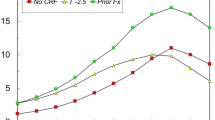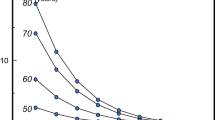Abstract
Scottish Intercollegiate Guidelines Network (SIGN) recently issued guidance on the management of osteoporosis and the prevention of fragility fractures. The aim of this paper was to critically review the guidance. The SIGN guidance utilises risk factors for fracture as an initial step for assessment, but recommends treatment only in individuals with a T-score of −2.5. There are many problems with the sole use of BMD as the sole gateway to treatment. Moreover, the assessment tools to determine risk (FRAX or QFracture) are not designed to detect osteoporosis but rather fracture risk. Whereas SIGN assumes that FRAX overestimates fracture probability, there are compelling reasons to believe that the disparity is related to the inadequate calibration of QFracture. The disparities make the use of a single threshold for BMD testing problematic. The SIGN guidance for men at high risk of fracture provides a set of confused and inconsistent recommendations that are in direct conflict with regulatory authorizations and is likely to increase further the large treatment gap in men. For women, the number of women eligible for treatment (i.e. with osteoporosis) is 81,700 with the use of FRAX but only 12,300 with QFracture representing 8.2 and 1.2 % of the total population at risk, respectively. We conclude that serious problems with the SIGN guidance preclude its implementation.




Similar content being viewed by others
References
Kanis JA, Borgström F, Compston J, Dreinhöfer K, Nolte E, Jonsson L et al (2013) SCOPE: a scorecard for osteoporosis in Europe. Arch Osteoporos 8:144. doi:10.1007/s11657-013-0144-1
Scottish Intercollegiate Guidelines Network (SIGN) (2015) Management of osteoporosis and the prevention of fragility fractures. Edinburgh: SIGN; 2015. (SIGN publication no. 142). http://www.sign.ac.uk. Accessed May 11 2015
National Institute for Health and Care Excellence (2014) NICE Clinical Guideline 146. Osteoporosis: assessing the risk of fragility fracture. London, UK. https://www.nice.org.uk/guidance/cg146. Accessed 18 May 2015
Nguyen ND, Frost SA, Center JR, Eisman JA, Nguyen TV (2008) Development of prognostic nomograms for individualizing 5-year and 10-year fracture risks. Osteoporos Int 19:1431–1444
Hippisley-Cox J, Coupland C (2009) Predicting risk of osteoporotic fracture in men and women in England and Wales: prospective derivation and validation of QFracture Scores. BMJ 339:b4229
Dachverband Osteologie e.V (2011) DVO guideline 2009 for prevention, diagnosis and therapy of osteoporosis in adults. Osteologie 20: 55–74. http://www.schattauer.de/en/magazine/subject-areas/journals-a-z/osteology/contents/archive/issue/special. Accessed May 2012
Kanis JA, Delmas P, Burckhardt P, Cooper C, Torgerson D (1977) Guidelines for diagnosis and management of osteoporosis. Osteoporos Int 7:390–406
Royal College of Physicians (1999) Osteoporosis: clinical guidelines for the prevention and treatment. RCP, London
Kanis JA, McCloskey EV, Harvey NC, Johansson H, Leslie WD (2015) Intervention thresholds and the diagnosis of osteoporosis. J Bone Miner Res. doi:10.1002/jbmr.2531
Cranney A, Jamal SA, Tsang JF, Josse RG, Leslie WD (2007) Low bone mineral density and fracture burden in postmenopausal women. CMAJ 177:575–580
World Health Organisation (1994) Assessment of fracture risk and its application to screening for postmenopausal osteoporosis. WHO Technical Report Series 843. 1994. WHO, Geneva
Li Y, Wei FF, Thijs L, Boggia J, Asayama K, Hansen TW et al (2014) Ambulatory hypertension subtypes and 24-hour systolic and diastolic blood pressure as distinct outcome predictors in 8341 untreated people recruited from 12 populations. Circulation 130:466–474
Kanis JA, Johnell O, Oden A, Jonsson B, De Laet C, Dawson A (2000) Risk of hip fracture according to World Health Organization criteria for osteoporosis and osteopenia. Bone 27:585–590
Johansson H, Kanis JA, Oden A, Compston J, McCloskey E (2012) A comparison of case-finding strategies in the UK for the management of hip fractures. Osteoporos Int 23:907–915
Kanis JA, McCloskey E, Johansson H, Oden A, Leslie WD (2012) FRAXs with and without BMD. Calcif Tissue Int 90:1–13
Leslie WD, Majumdar SR, Lix L, Johansson H, McCloskey EV, Kanis JA (2012) High fracture probability with FRAX® usually indicates densitometric osteoporosis: implications for clinical practice. Osteoporos Int 23:391–397
McCloskey E (2015) A BMD threshold for treatment efficacy in osteoporosis? A need to consider the whole evidence base. Osteoporos Int. doi:10.1007/s00198-015-3406-5
Collins GS, Mallett S, Altman DG (2011) Predicting risk of osteoporotic and hip fracture in the United Kingdom: prospective independent and external validation of QFractureScores. BMJ 342:d3651
Hippisley-Cox J, Coupland C (2014) Brindle P (2014) The performance of seven QPrediction risk scores in an independent external sample of patients from general practice: a validation study. BMJ Open 4:e005809. doi:10.1136/bmjopen-2014-005809
Kanis JA (2015) on behalf of the World Health Organization Scientific Group. Assessment of osteoporosis at the primary health-care level. Technical Report. World Health Organization Collaborating Centre for Metabolic Bone Diseases, University of Sheffield, UK 2008. https://www.shef.ac.uk/FRAX/reference.aspx. Accessed 14 July 2015
Kanis JA, Johnell O, Oden A, Johansson H, McCloskey E (2008) FRAX™ and the assessment of fracture probability in men and women from the UK. Osteoporos Int 19:385–397
Kanis JA, Oden A, Johnell O, Johansson H, De Laet C, Brown J (2007) The use of clinical risk factors enhances the performance of BMD in the prediction of hip and osteoporotic fractures in men and women. Osteoporos Int 18:1033–1046
Bolland MJ, Jackson R, Gamble GD, Grey A (2013) Discrepancies in predicted fracture risk in elderly people. BMJ 346:e8669
Kanis JA, Oden A, Johansson H, McCloskey E (2012) Pitfalls in the external validation of FRAX. Osteoporos Int 23:423–431
Nayak S, Edwards DL, Saleh AA, Greenspan SL (2015) Systematic review and meta-analysis of the performance of clinical risk assessment instruments for screening for osteoporosis or low bone density. Osteoporos Int 26:1543–1554
Koh LK, Sedrine WB, Torralba TP, Kung A, Fujiwara S, Chan SP et al (2001) A simple tool to identify Asian women at increased risk of osteoporosis. Osteoporos Int 12:699–705
Kanis JA, Harvey NC, McCloskey E (2014) Pre-screening young postmenopausal women for BMD testing. Bonekey Rep 11(3):544. doi:10.1038/bonekey.2014.39.eCollection
Crandall CJ, Larson J, Gourlay ML, Donaldson MG, Lacroix A, Cauley JA et al (2014) Osteoporosis screening in postmenopausal women 50-64 years-old: comparison of U.S. Preventive Services Task Force strategy and two traditional strategies in the Women’s Health Initiative. J Bone Miner Res 29:1661–1666
Hippisley-Cox J, Coupland C (2012) Derivation and validation of updated QFracture algorithm to predict risk of osteoporotic fracture in primary care in the United Kingdom: prospective open cohort study. BMJ 344:e3427. doi:10.1136/bmj.e3427
Hippisley-Cox J, Coupland C (2011) Validation of QFracture compared with FRAX. Analysis prepared for NICE 2011. http://www.qfracture.org/Validation-of-QFracture-vs-FRAX-for-NICE-2011.pdf. Accessed 15 May 2015
Davis S, Martyn-St James M, Sanderson J, Stevens J, Goka E, Rawdin A et al (2015) Bisphosphonates for preventing osteoporotic fragility fractures (including a partial update of NICE technology appraisal guidance 160 and 161). Technology Assessment Report
Cummins NM, Poku EK, Towler MR, O’Driscoll OM, Ralston SH (2011) Clinical risk factors for osteoporosis in Ireland and the UK: a comparison of FRAX and Qfracture Scores. Calcif Tissue Int 89:172–177
DeLusignan S, Valentin T, Chan T, Hague N, Wood O, van Vlymen J et al (2004) Problems with primary care data quality: osteoporosis as an exemplar. Inf Prim Care 12:147–156
Kanis JA, Johansson H, Oden A, Johnell O, De Laet C, Eisman JA et al (2004) A family history of fracture and fracture risk: a meta-analysis. Bone 35:1029–1037
Klotzbuecher CM, Ross PD, Landsman PB, Abbott TA, Berger M (2000) Patients with prior fractures have an increased risk of future fractures: a summary of the literature and statistical synthesis. J Bone Miner Res 15:721–739
Kanis JA, Johnell O, De Laet C, Johansson H, Oden A, Delmas P et al (2004) A meta-analysis of previous fracture and subsequent fracture risk. Bone 35:375–382
Kanis JA, Oden A, Johnell O, Jonsson B, de Laet C, Dawson A (2001) The burden of osteoporotic fractures: a method for setting intervention thresholds. Osteoporos Int 12:417–427
Siggeirsdottir K, Aspelund T, Johansson H, Gudmundsson EF, Mogensen B, Jonsson BY et al (2014) The incidence of a first major osteoporotic fracture in Iceland and implications for FRAX. Osteoporos Int 25:2445–2451
Lam A, Leslie WD, Lix LM, Yogendran M, Morin SN, Majumdar SR (2014) Major osteoporotic to hip fracture ratios in Canadian men and women with Swedish comparisons: a population-based analysis. J Bone Miner Res 29:1067–1073
Leslie WD, Lix LM, Johansson H, Oden A, McCloskey E, Kanis JA (2010) Manitoba bone density program. Independent clinical validation of a Canadian FRAX((R)) tool: fracture prediction and model calibration. J Bone Miner Res 25:2350–2358
Brennan SL, Leslie WD, Lix LM, Johansson H, Oden A, McCloskey E et al (2014) FRAX provides robust fracture prediction regardless of socioeconomic adversity. Osteoporos Int 25:61–69
National records of Scotland (2015) Mid-2014 population estimates. http://www.nrscotland.gov.uk/statistics-and-data/statistics/statistics-by-theme/population/population-estimates/mid-year-population-estimates/mid-2014/list-of-tables. Accessed 22 May 2015
Author information
Authors and Affiliations
Corresponding author
Ethics declarations
Conflict of interest
Professor Kanis led the team that developed FRAX as director of the WHO Collaborating Centre for Metabolic Bone Diseases; he has no financial interest in FRAX. Professors McCloskey, Oden, Harvey and Dr Johansson are members of the FRAX team. Professor Compston is Chairman of the National Osteoporosis Guideline Group, UK of which Professors Cooper, Kanis and McCloskey are members of its advisory body.
Rights and permissions
About this article
Cite this article
Kanis, J.A., Compston, J., Cooper, C. et al. SIGN Guidelines for Scotland: BMD Versus FRAX Versus QFracture. Calcif Tissue Int 98, 417–425 (2016). https://doi.org/10.1007/s00223-015-0092-4
Received:
Accepted:
Published:
Issue Date:
DOI: https://doi.org/10.1007/s00223-015-0092-4




